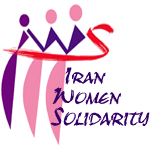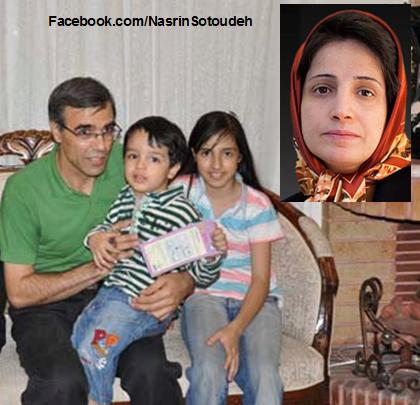Stoning in Iran UN CSW 57 Panel Presentation – Elahe Amani, Chair, Women’s Intercultural Network –Global Circles & Board Member, Global Advisory Stop Stoning Forever
Today, March 8th 2013, we celebrate International Women’s Day amid the various forms of violence against women—attacks of regressive forces on women by state and non-state actors from India to Iran, from South Africa to Egypt. But in spite of this injustice, more than 6000 women from all over the world have gathered in NY to demand action from the global community at the United Nations Commission on the status of women.
It is inspiring to see massive demonstrations all over the world, and to see these demonstrations reach an ever-expanding audience through traditional media and social media. It is inspiring that more than ever men and women—particularly younger people all over the world—are demanding an end to all forms of violence against women. The actions of these individuals prove that the voice of women can never again be denied in any country at any time. No turning back!
It is clear that the world still continues on a path of patriarchal domination. Yet this year marks 102 years since the first organized Women’s Day demonstrations were held and marks the 36th anniversary since the United Nations declared March 8 as International Women’s Day in 1977.
It is in this spirit and intention that we have gathered to draw the attention of the global community to one of the most barbaric forms of the death penalty. While the death penalty itself is being eradicated in many countries around the world, the most brutal form of the death penalty—stoning—is still being practiced. Death by stoning has been practiced since the establishment of the IRI in my birth country of Iran.
While 90 percent of the countries of the world are not executing and 100 countries have completely abolished it, Iran leads the world in number of executions per capita among nations that continue to apply the death penalty in their domestic jurisdictions. Many of these executions are conducted in secret and go unreported by official sources. According to reports from human rights groups that document executions in Iran from both official and unofficial sources, Iran is second only to China in annual death penalty sentences. Since 1979, Amnesty International has documented at least 77 cases of stoning in the Islamic Republic of Iran, and this figure is likely low due to the lack of proper documentation through 1979-1984.
The first reported case of stoning was shortly after the revolution in July 1980. Four women were sentenced to death by stoning based on the suspicion of adultery. I recall, when I shared the news with my great aunt (may she rest in Peace), a devoted Muslim and a woman of faith in Kerman, she immediately responded “this is not Islam”. The fact is that stoning was only used as a form of death penalty by the IRI. While there are records of various forms of human rights abuse and discrimination of women in the 20th century history of Iran, there are no records of stoning in Iran prior to the July 1980 stoning. Prior to this event, adultery, nor any other crime for that matter, ever warranted stoning. This is why we call here and now that stoning should not in our name or in our culture.
Perhaps most harrowing is that the Penal Code of Iran specifies the manner of execution and types of stones that should be used. Article 102 states that men will be buried up to their waists and women up to their breasts for the purpose of execution by stoning.
Article 104 states, with reference to the penalty for adultery, that the stones used should “not be large enough to kill the person by one or two strikes; nor should they be so small that they could not be defined as stones.” This makes it clear that the purpose of stoning is to inflict as much pain as possible in a process leading to a slow death.
As mentioned, the cruel practice of stoning started with the four women in Kerman, and since then the majority of those sentenced to death by stoning have been women. Women suffer disproportionately from such punishment.
One reason is that they are not treated equally before the law and courts, in clear violation of international fair trial standards. They are particularly vulnerable to unfair trials because they are more likely than men to be illiterate and therefore more likely to sign confessions to crimes they did not commit. Discrimination against women in other aspects of their lives also leaves them more susceptible to conviction for adultery.
In 2002, the IRI announced a moratorium on execution by stoning, and since then officials have routinely denied that stoning sentences continued to be implemented in Iran. For example, In 2005, judiciary spokesman Jamal Karimirad stated, “in the Islamic Republic, we do not see such punishments being carried out”, further adding that if stoning sentences were passed by lower courts, they were overruled by higher courts and that “no such verdicts have been carried out.”
In spite of this, deaths by stoning continued to be reported.Ja’far Kiani was stoned to death on July 5th, 2007 in a village near Takestan in Qazvin province. He had been convicted of committing adultery with Mokarrameh Ebrahimi, with whom he had two children and who was also sentenced to death by stoning. It was the first officially confirmed stoning since the moratorium in 2002, although a woman and a man are known to have been stoned to death in Mashhad in May 2006. The stoning was carried out despite a stay of execution ordered in his case and in defiance of the 2002 moratorium.
In 2008, for the second time, Iran’s judiciary announced that the punishment of stoning convicts to death has been removed in the draft legislation submitted to parliament for approval.
Judiciary spokesman Ali Reza Jamshidi announced that “In the latest version of the Islamic penal codes bill, which has undergone several modifications, such punishments are not mentioned.”
While it is not known definitely when the last stoning was executed in Iran, but there are reports that the last case of stoning of a women was Mahboubeh M on May 7th 2006, even after the second announcement in 2008 of banning the practice of stoning multiple cases of stoning have been documented. Dueche velue reported the stoning of a man in Rasht in 2009 and another case of stoning was reported in May 2009.
On March 6th, 2012, the Special Rapporteur on Situation of Human Rights in IRI to the general assembly of United Nation reported:
“A number of individuals have been sentenced to death in recent years by stoning despite announcements of a moratorium on stoning as a form of capital punishment by the judiciary. In its report on the subject, Amnesty International stated that at least 15 men and women are currently facing death by stoning sentences for “adultery while married.” The Special Rapporteur joins the Human Rights Committee in expressing its concern about the use of stoning as a method of execution maintains that adultery does not constitute a serious crime by international standards; and strongly urges the Government to enforce its moratorium on stoning. The Special Rapporteur welcomes the fact that stoning has now been omitted from the new Penal Code and hopes all existing cases will be reviewed to ensure that such penalties are not carried out. “
According to a report by Human Rights Watch released in August 2012 , the new revised penal code still “allows judges to rely on religious sources, including Sharia law and fatwas issued by high-ranking Shia clerics, to convict a person of apostasy or sentence defendant convicted of adultery to stoning.”
There are several concerns regarding the claim of omission of stoning from the penal code. As the Special Rapporteur of Human Rights and Human Rights Watch report expressed, stoning can still be issued at a judge’s discretion in accordance with sharia law or fatwas.
It is also correct that in comparison to the previous penal code, stoning has been removed from the section of the code dealing with penalties for adultery. Furthermore, the word ‘stoning’ appears twice in articles 172 and 198 of the new penal code, although details about its implementation, such as the appropriate size of stones to be used, wrapping the convicted person in a white shroud (kafan) and burying the male adulterer in the soil up his waist and a female up to her shoulders, are all gone. But the omission of the implementation process is a serious area of concern and, moreover, the fact remains that that sexual relations outside of marriage is still a crime.
The high-profile case of Sakineh Mohammadi Ashtiani and other victims of stoning have brought shame on the status of human rights in Iran.
In light of the political fog created by Islamic Conservatives, the current political climate, and the government’ s past history of false moratoriums on stoning, the global community should not be too quick to cheer the changes in Iran’s penal code. Whether or not the penal code is truly implemented and the practice of stoning eliminated is yet to be seen.
As I shared in the briefing statement at the 20th Session of the Human Rights Council on July 6, 2012 in Geneva, “Honor crimes, FGM and stoning are often described as “tradition” and an unchanging facet of “culture.” While all these inhuman and cruel practices that violate the rights of women to life, integrity and dignity, have a cultural dimension, they are also shaped by social factors, UN resolutions, government policies, and institutional discourse can provide an encouraging environment for eradicating such inhuman and cruel practices.
A resolution of the Commission on the Status of Women which bans stoning—one of the cruelest forms of the death penalty and a clear form of torture—will be a pivotal moment in the fight to bring an end to this practice.
The time to act is now, and action is demanded.


